The stereo mini 3.5mm plug is commonly found in earphones and headphones.
When you say Mini, Mini-plug or 3.5mm Plug, you are probably thinking of a TRS/3-pole plug.
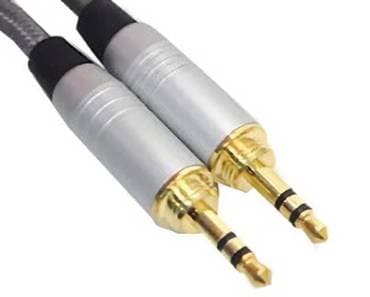
Stereo Mini 3-pole
Nowadays, not only 3-pole, but also 4-pole plugs can be found on the market.
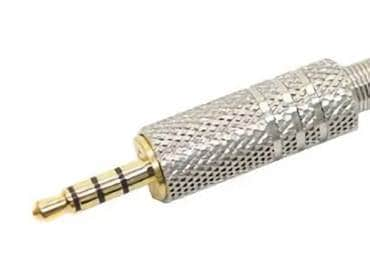
Stereo Mini 4-pole
However, the standards for these 4-pole plugs are unclear and there are many different types of pin assignments, which can cause problems with signal transmission between devices.
In this article, I would like to take a closer look at the 4-pole stereo mini plug and discuss a few of the most important aspects of the 4-pole plug.
■ Two Typical Types of 4-pole Plugs
TRRS/4-pole, but there are two main specifications.
Firstly, please take a look at the images below.
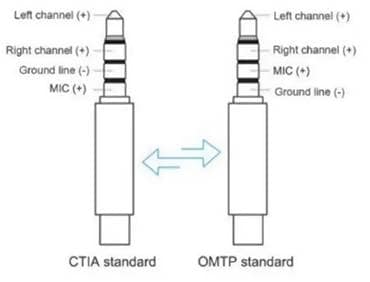
This is the CTIA standard vs. the OMTP standard.
As many of you may know, the standards are divided by whether it is an iPhone system or not.
The difference is simple: the pin assignments for ground and MIC are different.
- CTIA standard is R2: GND (-), S: MIC (+)
- OMTP standard: R2: MIC (+), S: GND (-)
(*R=RING, S=SLEEVE, R2 means the second of RING).
CTIA (Cellular Telephone Industry Association) is a standard used in some smartphones, particularly the iPhone, and has the letter ‘I’ in its abbreviation, so remember that CTIA is an iPhone-based standard.
OMTP (Open Mobile Terminal Platform) is a standard for some Android-based smartphones.
Recently, adapters for interchanging these pin assignments are also available on the market, so it is necessary to check the above pin assignments and names carefully in order to make good use of them.
Now, there are also other balanced systems for video.
Let's check these as well.
■ Balanced System
In the Sony MDR-1A headphones, the left and right independent balanced system is used for wiring.
The image below shows the pin assignment of the re-cable plugs from Oyaide Electric.
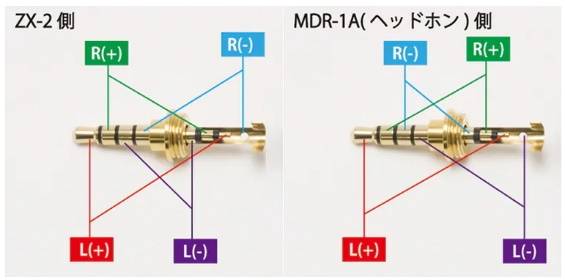
Source:Oyaide Electric
In some cases, signals are transmitted using the left-right independent balance method, so knowing about this is not the same as not knowing about it.
If you are aware that there are 4-pole plugs with this type of pin assignment, I think you can prevent trouble from occurring due to incorrect usage.
■ For Video
First of all, let's take a look at the structure of the pin assignment for video.
See the image below.
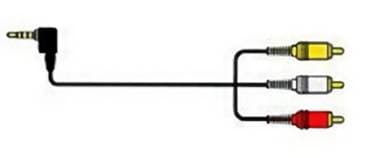
Composite
Video cables almost always have a yellow RCA terminal attached to the video terminal.
Generally speaking
Yellow: video
White: audio (L)
Red: audio (R)
3-pole + ground, converted to a 4-pole plug.
Other plugs with different colors or with opposite audio assignments are sometimes available, but my impression is that they are not very common.
In researching 4-pole plugs for video, I found that they are in a confusing state due to the lack of standardization of pin assignments.
Looking specifically at the sales page for the plugs, it states, “Due to the lack of uniformity in standards, please check the pin assignment carefully!” was noticed quite often.
After a quick search, I quickly found the following two types.

I took this opportunity to sort out the 4-pin assignments for video.
As far as I could ascertain, there are four patterns, and the one with the highest number seems to be the most commonly used pin assignment at present.
The following diagram summarizes the four patterns, so please use it as a reference.
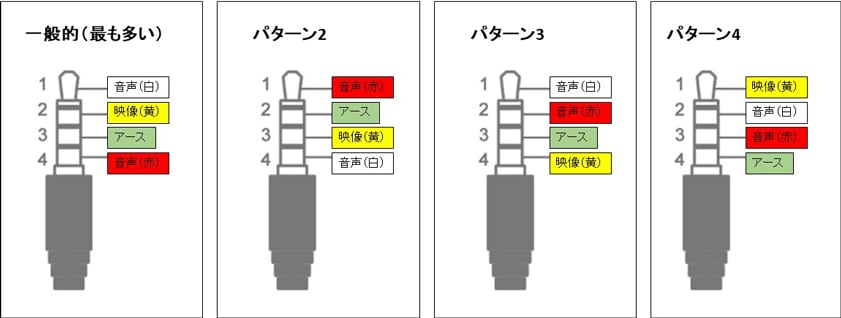
The standard for 4-pole plugs is still ambiguous and various pin assignments are being mixed together.
First of all, it is important to be aware of what kind of plugs exist and when a problem occurs, so you need to ask yourself, “Have I already seen this before?" I think it is important to be aware of what kind of things exist, so that when a problem occurs, you will be able to recognize it.
The items shown here may not be all of them.
However, I hope this article will help you to find a solution to your problems.
That's all for today's lesson on the 4-pole plug.






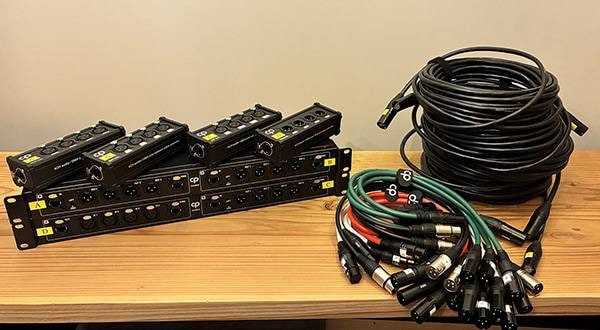

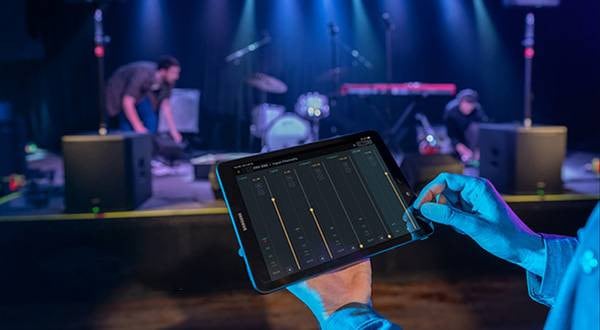

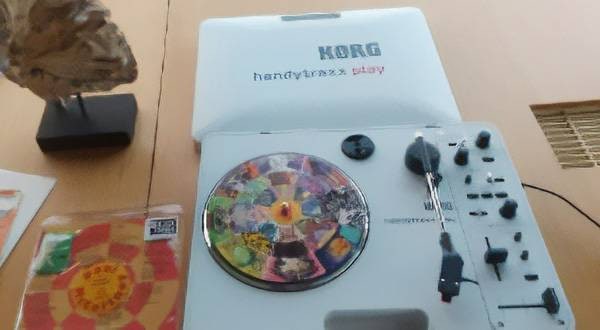
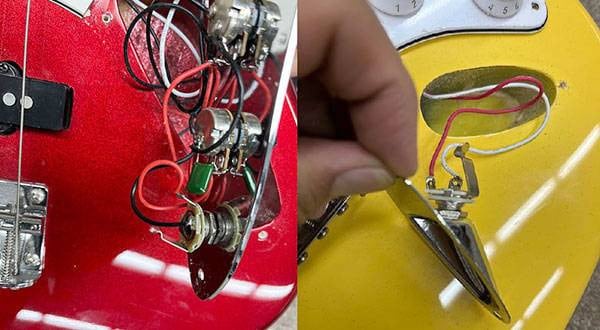
![How to Make a Shielded Cable for Beginners - An Easy-to-Understand Guide on Soldering [Short Plug]](/contents/uploads/thumbs/2/2022/8/20220809_2_18915_1.jpg)
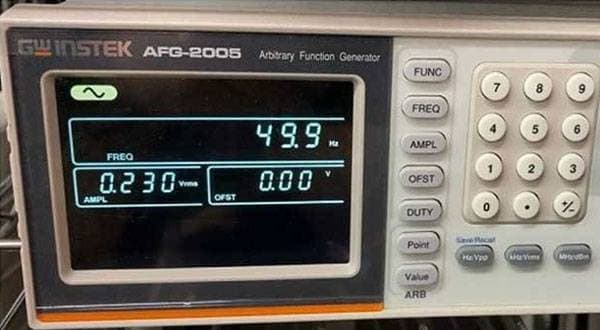
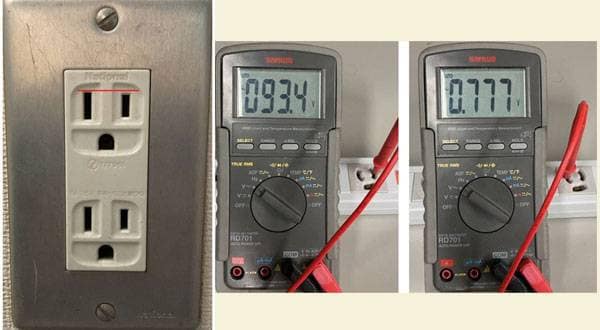
![[2022 Latest Edition] Overview of Some New Audio Interfaces!](/contents/uploads/thumbs/2/2021/3/20210311_2_12472_1.jpg)

 BOSS MIDIケーブルで広がるパフォーマンスの世界
BOSS MIDIケーブルで広がるパフォーマンスの世界
 マイクケーブルの作り方
マイクケーブルの作り方
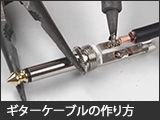 ギターケーブルの作り方
ギターケーブルの作り方
 ケーブルの選び方
ケーブルの選び方
 虎の巻 ケーブル講座
虎の巻 ケーブル講座
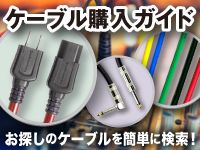 ケーブル購入ガイド
ケーブル購入ガイド















